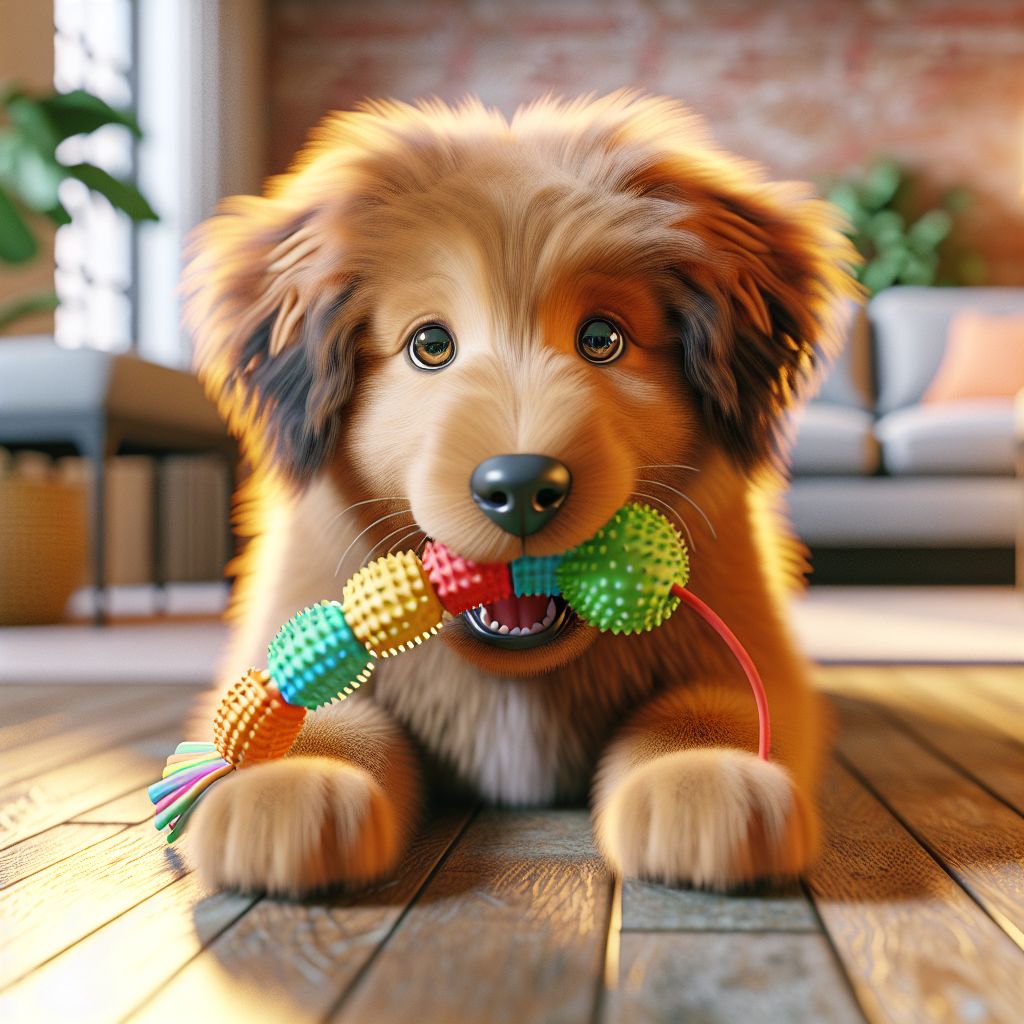How to Train Your Dog Not to Bite: Expert Tips!
To effectively address the behavior of biting in dogs, it's crucial to first understand the underlying reasons why our furry friends may resort to this action. **Dogs primarily bite as a form of communication**, indicating discomfort, fear, or even dominance. Recognizing these signals can greatly aid in the process of training.
**Puppies often bite as part of their developmental stage**, exploring the world around them through mouthing and chewing. During teething, they may bite to relieve discomfort. It's essential to guide this natural behavior into more acceptable actions.
In some cases, a dog may bite due to feeling threatened or stressed. Situations that are unfamiliar or overwhelming can trigger a defensive bite. Understanding these triggers can help in adjusting the environment or approach to prevent such occurrences.
**Another reason dogs bite is due to possessiveness**, especially when they are protecting their food, toys, or territory. Training them to understand that sharing and interaction bring positive reinforcement can be beneficial.
Additionally, dogs might bite during play as part of their natural instincts. Teaching them the difference between acceptable play and biting is a crucial aspect of their training.
By comprehending these behaviors and their causes, you can tailor your training approach to be more effective and compassionate.
_Treat your furry friend to the joy they deserve with our range of delicious and nutritious dog treats._ Visit Happypup.dog to explore our selection.
Importance of Early Training

Initiating training at an early stage in a dog's life is vital for developing good behavior patterns that last a lifetime. **Early training not only establishes a strong foundation for obedience**, but also fosters a healthy relationship between the dog and the owner. Puppies are naturally more adaptable and eager to learn, making them the perfect candidates for beginning their training.
**One of the primary benefits of early training is socialization**. Introducing your puppy to different people, environments, and other animals helps them become well-adjusted and reduces the risk of fear-driven behaviors, such as biting. A well-socialized dog is generally more confident and less likely to react aggressively in unfamiliar situations.
Another significant advantage is the development of impulse control. Teaching puppies to follow basic commands like "sit," "stay," and "leave it" can prevent potential biting incidents by encouraging them to think before reacting. Early training sessions should be short, positive, and engaging to keep the puppy's attention and reinforce good behavior.
Consistent early training also helps in establishing boundaries and routines. **Dogs thrive in structured environments** where they understand the expected behavior. This understanding prevents confusion and frustration that might lead to biting or other undesirable actions.
By investing time in early training, you are equipping your dog with the skills necessary for being a well-behaved companion. The effort you put in during these initial stages will pay dividends in the form of a harmonious and happy relationship with your pet.
Positive Reinforcement Techniques
Positive reinforcement is a highly effective technique when it comes to **training your dog not to bite**. This method involves rewarding your dog for displaying desirable behaviors, thereby encouraging them to repeat those actions. Unlike punishment-based training, positive reinforcement fosters a trusting and cooperative relationship between you and your furry friend.
**Treats are one of the most common forms of positive reinforcement**. They provide an immediate reward for good behavior, making them an excellent tool for training. When your dog follows a command or refrains from biting, offer a small, tasty treat to acknowledge their good behavior. Be sure to use treats that are healthy and appealing to your dog to keep them motivated.
Another powerful form of positive reinforcement is praise. Dogs thrive on affection and attention from their owners. When your dog behaves appropriately, offer verbal praise with a cheerful tone or a gentle pat. This reinforces the idea that good behavior leads to positive outcomes.
**Consistency is key** when applying positive reinforcement techniques. Reward your dog every time they exhibit the desired behavior to strengthen the association between the action and the reward. Over time, this will help your dog understand what is expected of them.
Incorporating toys into your training routine can also be beneficial. Many dogs are motivated by play, and offering a favorite toy as a reward can be just as effective as treats or praise. This approach keeps training sessions fun and engaging, which is crucial for maintaining your dog's interest and enthusiasm.
By utilizing positive reinforcement techniques, you create an environment where your dog feels safe and encouraged to learn, ultimately reducing the likelihood of biting and other unwanted behaviors.
Consistency in Training Methods

Consistency is a cornerstone of effective dog training, particularly when it comes to **teaching your dog not to bite**. Dogs thrive on routine and clear expectations, so maintaining a consistent approach in your training methods is crucial for success. When you use consistent signals and commands, your dog is more likely to understand and comply with the desired behavior.
First and foremost, ensure that everyone in the household is on the same page. If one person allows behaviors that another is trying to correct, your dog will become confused and may not learn effectively. It’s important that all family members use the same commands and reward systems to reinforce the training.
Establish a regular training schedule. Short, frequent sessions are more effective than long, sporadic ones. Aim for 5-10 minute sessions multiple times a day to keep your dog engaged without overwhelming them. Make sure to practice in various environments to help your dog generalize their learning to different situations.
Consistency also applies to your reactions to biting or other unwanted behaviors. If your dog bites, it’s vital to respond in the same way each time. For instance, you can use a firm "no" followed by redirecting them to a chew toy or offering a treat for a more appropriate behavior.
Remember, consistency builds trust. When your dog knows what to expect, they feel more secure and are less likely to resort to biting out of anxiety or confusion. By remaining consistent in your training methods, you set a clear path for your dog to follow, leading to better behavior and a more harmonious relationship.
Socializing Your Dog Effectively

Socializing your dog is an essential component in the quest of how to train your dog not to bite. Proper socialization helps your dog feel comfortable in various environments and reduces the likelihood of fear-based biting. Introducing your dog to different people, animals, and settings can greatly enhance their ability to interact calmly and confidently.
Start socializing your dog early, ideally during puppyhood, as this is when they are most receptive to new experiences. If your dog is older, don’t worry—socialization can still be successful with patience and careful exposure. Begin by introducing them to new people and pets in a controlled and positive manner. Encourage gentle interactions and reward your dog with treats and praise when they remain calm.
Expose your dog to a variety of environments, such as parks, busy streets, and pet-friendly stores. Each new experience should be positive and gradual, ensuring your dog doesn’t become overwhelmed. Pay attention to your dog's body language; if they show signs of stress or anxiety, it might be best to remove them from the situation and try again later.
Enrolling your dog in a socialization class can also be beneficial. These classes provide a structured setting where your dog can meet other dogs and people under the supervision of a professional trainer. The controlled environment helps your dog learn appropriate behaviors and build confidence.
Consistent exposure to diverse situations helps your dog develop a well-rounded personality. A well-socialized dog is less likely to see new experiences as threats, reducing the chances of biting as a reactive behavior. By investing time in socialization, you're contributing to your dog's overall well-being and fostering a safer, happier pet.
When to Seek Professional Help

While many dog owners can successfully learn how to train your dog not to bite on their own, there are times when seeking professional help is necessary. Understanding when to consult an expert can make a significant difference in effectively addressing biting behaviors.
If your dog displays aggressive biting that seems to stem from fear, anxiety, or territorial behavior, it’s crucial to contact a professional trainer or a veterinary behaviorist. Such professionals are equipped with the knowledge and tools to assess the underlying causes of aggression and design a tailored training plan. Additionally, if a dog bite has caused harm to a person or another animal, immediate professional intervention is necessary to prevent future incidents.
Persistent biting that doesn’t improve with basic training techniques may indicate deeper behavioral issues. A professional can provide insights and strategies that are beyond the scope of general dog training tips. They will use a combination of behavior modification techniques and positive reinforcement to address the root cause of the biting.
Choosing the right professional is key. Look for trainers who use humane, science-based methods and have experience dealing with biting and aggression. Recommendations from your veterinarian or dog-owning friends can be invaluable in finding a qualified expert.
Ultimately, the goal is to ensure the safety and happiness of both your dog and those around them. If you’re unsure whether professional help is needed, erring on the side of caution is always best.
Give your furry friend the joy they deserve with our range of delicious and nutritious dog treats. Visit our website for more details: Happypup.dog






